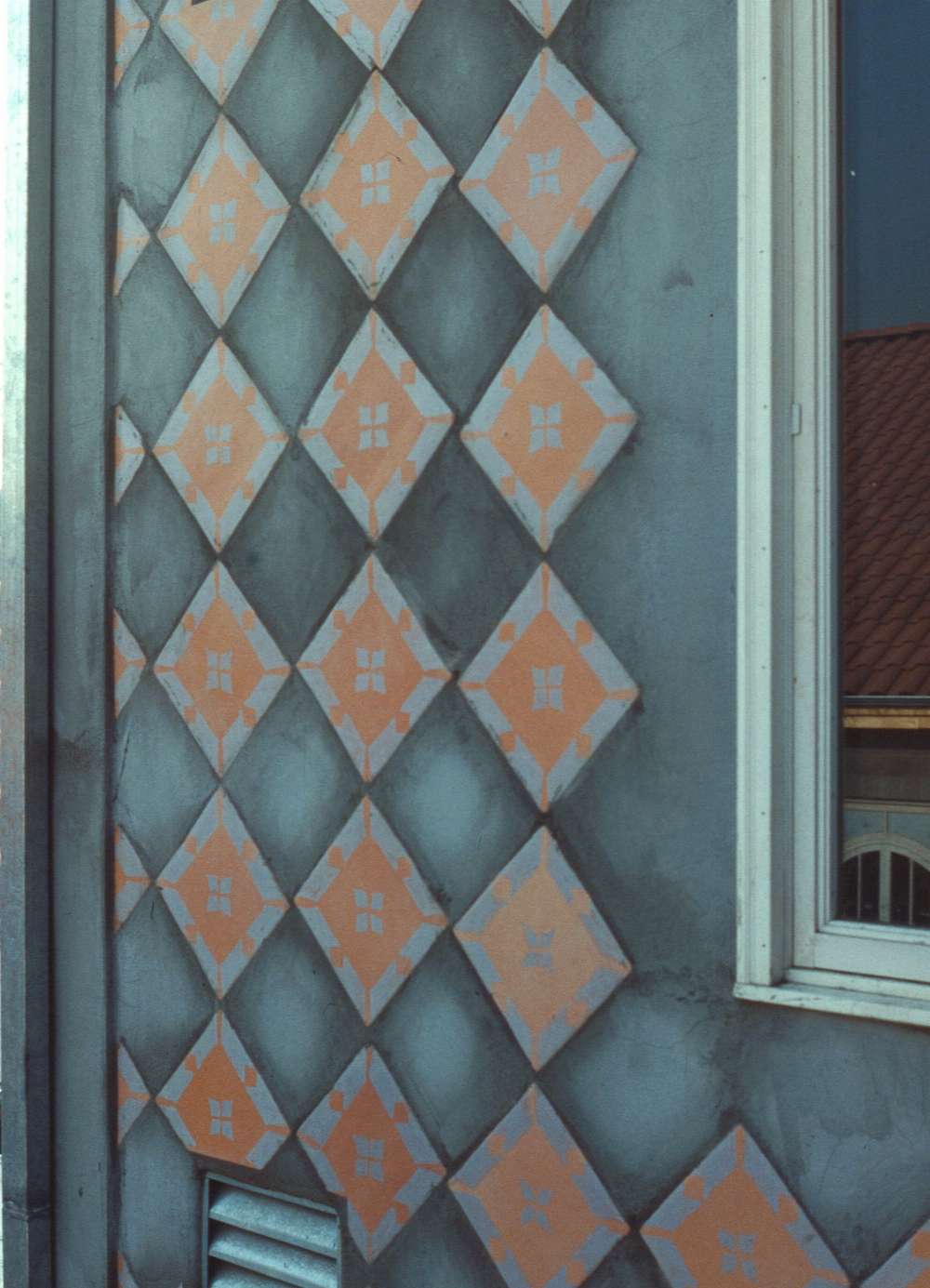
Julian Street Inn – Shelter for the Homeless: Exterior wall cladding with hand-painted and hand-glazed tilework
19884.500 hand-glazed grey tiles with hand-drawn geometric pattern, on reddish Mexican body tiles, for cladding the second floor exterior walls of the Julian Street Inn.
Contents
-
The Julian Street Inn - Shelter for the Homeless: Exterior wall cladding with hand-painted and hand-glazed tilework - Tile pattern studies
01/01/1987
Sequence of four sketches titled “Simplicity and Nothing”, developed as studies of tile patterns, applying the property of simplicity in the formation of a tile design.
-
The Julian Street Inn - Shelter for the Homeless: Exterior wall cladding with hand-painted and hand-glazed tilework - Tile pattern studies
01/01/1987
Sequence of three sketches titled “Process of Creating Centers”, depicting the centering process for developing a tile design to be used in the San Jose Shelter for the Homeless.
-
The Julian Street Inn - Shelter for the Homeless: Exterior wall cladding with hand-painted and hand-glazed tilework - Sketches
01/01/1987
Early study of the proportional distribution of color and materials between the first and the second floor parts of the building exterior elevations.
SEE ALL Drawings
-
The Julian Street Inn - Shelter for the Homeless: Exterior wall cladding with hand-painted and hand-glazed tilework - List of tile manufacturers
01/01/1987
Four handwritten pages including contact information, tile specifications, production time estimations, transportation service used and some costs, as specified by various tile manufacturers located near the project area.
-
The Julian Street Inn - Shelter for the Homeless: Exterior wall cladding with hand-painted and hand-glazed tilework - Underglaze color notes
01/01/1987
Five pages with sketches indicating the underglaze color layouts and names as seen on the actual tiles fired during the testing process; in search of the correct underglaze to be used for the tiles.
-
Julian Street Inn - Shelter for the Homeless: Exterior wall cladding with hand-painted and hand-glazed tilework - Change Order #1 issued by C.E.S.
25/03/1988
Change order regarding terracotta tile inserts into slab edges and requesting the signing of a subcontract C.E.S., this being one of the specialty construction works to be performed by C.E.S.
SEE ALL Records
-
The Julian Street Inn - Shelter for the Homeless: Exterior wall cladding with hand-painted and hand-glazed tilework - Photographs of mock-ups
01/10/1986
Photograph of an early small panel mock-up composed of plain concrete and terracota tiles to check their level of color contrast.
-
The Julian Street Inn - Shelter for the Homeless: Exterior wall cladding with hand-painted and hand-glazed tilework - Photographs of model
01/01/1987
Photograph of an early working model of a section of the building wall for testing the relationhip between the recessed bays on the ground floor with the cladding of the second floor wall with tilework.
-
The Julian Street Inn - Shelter for the Homeless: Exterior wall cladding with hand-painted and hand-glazed tilework - Photographs of sketches depicting design process
01/01/1988
Eighteen photographs of a sequence of sketches by Christopher Alexander together with colored mock-ups of the design either on tiles or cardboard, depicting the unfolding of the tile pattern from a simple flower design, to a geometric pattern with rhombs, ...
SEE ALL Photographs
References
-
Color and Inner Light: The Eleven Color Properties
Christopher Alexander postulated that centers and the field of centers they create are the building blocks from which wholeness is made. However, he further argued that geometry alone is not sufficient, and that color is the way wholeness comes to ...
-
Ornament and Function as Products of Unfolding
Ornament arises as part of the design process, when a person is making and seeks to embellish this "something" while making it. It arises as a result of the latent centers in the uncompleted thing requiring still more centers, requiring ...
-
Strong Centers in all Levels of Scale
A building can only amount to something as a living thing when the various physical elements which appear in it are profound centers. The dominant feature of the process that is working correctly is that new centers are formed, and ...
SEE ALL Scientific Research




 Go Back
Go Back